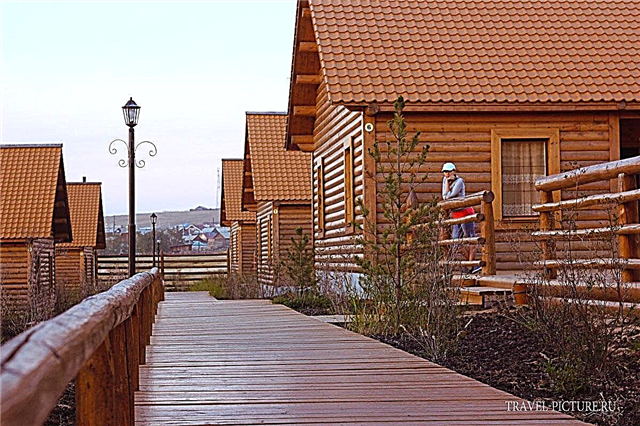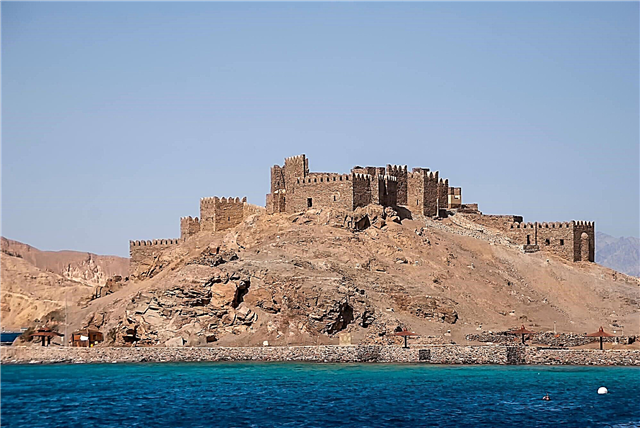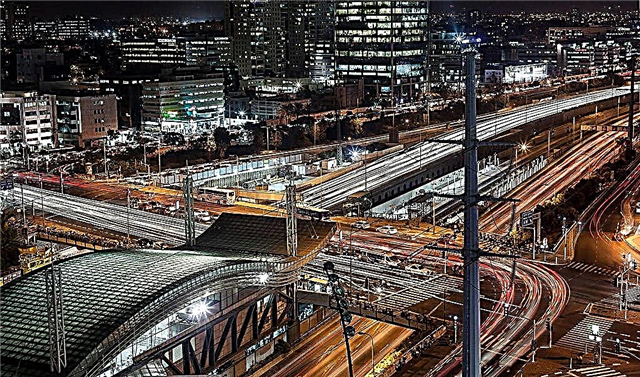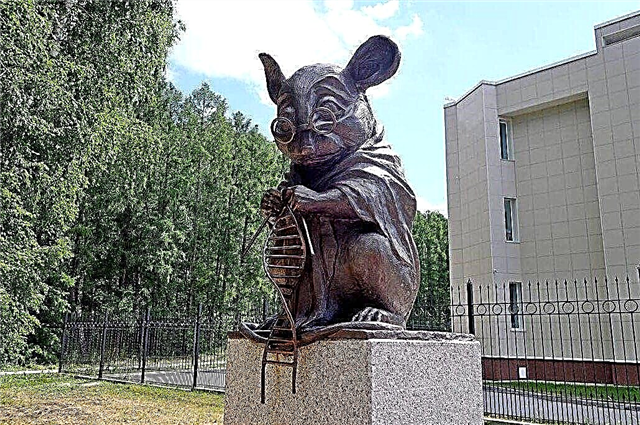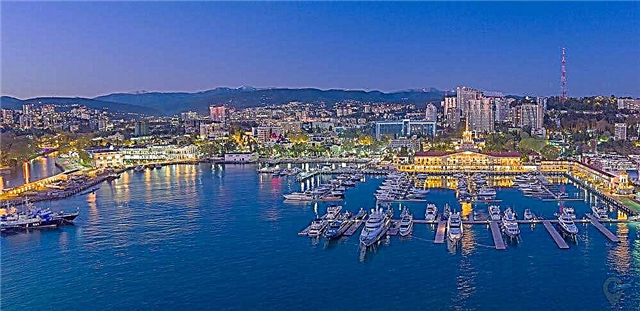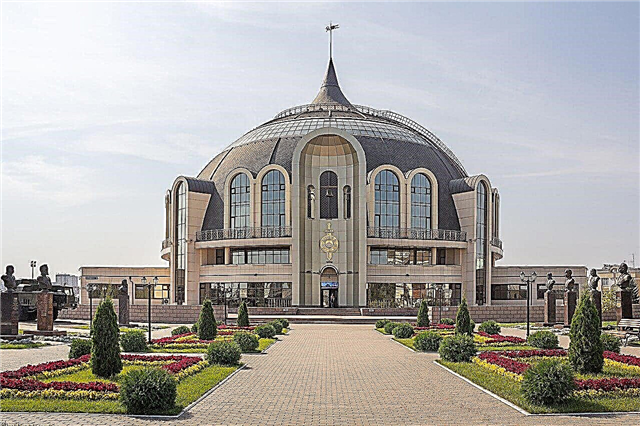Tula is able to surprise the most sophisticated traveler. There are ancient architectural monuments, monasteries and churches, noble mansions, modern city parks. Special attention is paid to unofficial symbols of Tula - samovar, gingerbread, Leskov's character Levsha. Monuments and thematic museums have been opened in their honor. Many memorials are dedicated to the military exploits of the inhabitants of Tula. Tula weapons museums are must-see places for tourists.
Classical museums are dedicated to the fine arts, as well as the life of prominent townspeople - Demidov, Krylov, Veresov, Beloborodov. Most of the tourists strive to get to the museum-reserve, which has preserved a special literary atmosphere - Yasnaya Polyana, and to touch the life of the great Russian writer Leo Tolstoy. It is worth noting another exhibition complex related to the writer - "Kozlova Zaseka".
The most interesting and beautiful places
List, photo with names and descriptions of popular sights of the city.
Tula Kremlin
Historical monument, built at the beginning of the 16th century. After extensive restoration at the beginning of the 21st century, it is in excellent condition. The perimeter of the walls of the Tula Kremlin is about 1000 meters. On them, as well as on 9 towers, you can go with a guided tour. Museum exhibitions are worth visiting. One of the most significant exhibits is a model of the historical view of the Kremlin, which is a 130 times reduced version of the fortress.

About all the top places in the region article: the main attractions of the Tula region. If you are going on vacation, then an article about country hotels and tourist centers in the Tula region will be useful to you.
Assumption Cathedral of the Tula Kremlin
One of the main attractions on the territory of the Kremlin in Tula. The cathedral was founded in the middle of the 16th century. Its architecture is interesting - the interweaving of baroque and classicism, pretentious decor, many original details and bas-reliefs. The color of the temple is also unusual - light lilac. The painting inside the temple was carried out by the masters of the Yaroslavl school. Also, carved capitals, stucco molding, and ornament are used in the interior design.

Epiphany Cathedral of the Tula Kremlin
Built in the middle of the 19th century in a classic style. Together with the Assumption Cathedral and the bell tower, it forms a single architectural ensemble. Three stone porches were built to enter the high arch of the building. The graceful iconostasis was made by the master Safronov from Moscow. Initially, the two-tiered cathedral had five domes, but after the destruction of the Soviet era, only one chapter remained. Since 1989, the cathedral has been hosting a weapons museum.

Tula State Museum of Weapons
It occupies two buildings - the premises of the Epiphany Cathedral on the territory of the Kremlin and a modern building made in the form of an ancient Russian warrior's helmet. This is one of the oldest museums in the country - it was founded in 1775. It was created on the basis of the products of a large arms factory in Tula, which has been operating since the time of Peter I. The permanent exhibition of the museum tells about cold arms and small arms since the XIV century.

Kazanskaya embankment
The length of the pedestrian embankment is about a kilometer. It was built in 2018 along the old channel of the Upa River from the Kremlin to the Weapons Museum. This is one of the most beautiful places in Tula, where residents and guests of the city like to walk. Several bridges are thrown across the water, which are excellent viewing platforms. On the embankment, there is a children's and a sports area, a stage, a cafe, art objects, boat and bicycle rental.

Iskra urban space
It is located in the historical center of Tula in the building of the former diocesan school and next to it. An unusual place is made in a modern format of art space. Here you can simply relax among the original installations, go to a cafe or a fashion store. There are showrooms and a coworking space. Popular with tourists and city dwellers, this stylish and cozy place has been created by a group of creative and imaginative local companies.

Historical and Memorial Museum of the Demidovs
The necropolis museum on the territory of the former Kuznetskaya Sloboda has been operating since the 90s of the XX century. It is dedicated to the famous dynasty of industrialists, miners and gunsmiths - the Demidovs. The basis of the museum is the family tomb in the Nikolo-Zaretskaya church. The church, built with the money of Akinfiy Demidov in the 18th century, is a federal monument of history and culture. The exposition includes ancient weapons, dishes, archaeological finds.

Tula Regional Exotarium
Amphibian and reptile park. This unique place is popular with tourists and is respected among scientists - excellent conditions have been created here for the preservation and reproduction of rare species of animals. The collection of snakes in the Tula exoterium is one of the largest in the world - about 500 species. There are four halls for inspection, in which you can see a python, an iguana, a chameleon, a skink, as well as unique gila-toothed lizards.

Metalist street
Historic pedestrian street. In 2018, the street was landscaped, the appearance of most of the old buildings on it was reconstructed. Cafes, shops, hotels were placed in the houses of merchants and townspeople. Representatives of large museums are located in the Museum Quarter - Yasnaya Polyana, Polenov's estate, Kulikovo Pole. The architecture of the buildings on the street is varied - stucco forms of the French Renaissance side by side with classical pediments.

Central Park of Culture and Rest named after P. P. Belousov
A large and well-maintained park area is located practically in the center of the city. The total area of the park is 143 hectares, of which almost 100 hectares are forest. The park includes three lakes. About 90 species of trees grow in the park, including rare ones - Siberian cedar, white willow, red oak, Amur velvet. In the park, you can hand feed squirrels and ducks - they move freely around it and are not at all afraid of people.

Cultural landmarks of Tula
The most interesting museums and exhibitions of the city that are worth visiting.
Tula Regional Museum of Local Lore
The permanent exhibition in the museum has been operating since the 1920s. It covers the period of the region's history from ancient times to the Second World War. For inspection, the teeth and tusks of a mammoth, corals to the bottom of ancient seas, fossils of the Ice Age are exhibited. Of particular interest to visitors is the hall of Tula culture, where several thousand books are exhibited, including those printed on parchment in the 15th century.
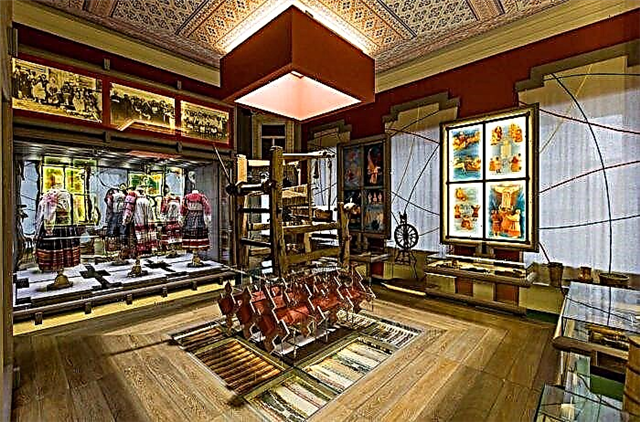
Machine tool museum
A multimedia exhibition that tells about the history of the world and Russian industry. It is located within the walls of the former production halls, which creates a special atmosphere. The area of the exhibition halls is about 1000 m², it contains machines from all over the country. Each machine has educational screens. Alexander Baluev, Sergey Chonishvili, Alisa Grebenshchikova worked on audio recordings of the factory literature.

Museum "Tula Samovars"
The museum of one of the city symbols is located at the entrance to the Kremlin. Its expositions tell about the history of samovar making since the 18th century. Different types of samovars are exhibited in the halls. There are factory shops - pantries, field shops, sbitenniki. There are also works of private masters - miniature, birch bark, porcelain. It will also be interesting for guests to view the collection of antique tableware and furniture. There is a gift shop.

Museum "Old Tula Pharmacy"
It is located in an old building where the city's main pharmacy has been located since the 19th century. Among the vintage atmosphere "semi-antique" there are several original showcases dedicated to quackery, pharmacy utensils, and the preparation of medicines. Among the exhibits you can see a snake snake in alcohol, a wolf's tooth, old syringes, and even a shod flea made by a Tula master.They hold master classes on perfumery and soap making.

Tula Museum of Fine Arts
It was opened more than a century ago on the basis of the funds of the Tula diocese. Consists of three departments - Russian art, contemporary art and Western European art. The section of Russian painting is represented by the works of such masters as Repin, Shishkin, Surikov, Aivazovsky, Levitan. A separate exhibition is dedicated to icon painting of the 16th-19th centuries. The European section also displays graphics, works from the field of applied arts.

Museum "Tula Gingerbread"
Introduces visitors to the history, features and traditions of making gingerbread. The exposition occupies two halls. The assortment of gingerbread is amazing - festive, curly, souvenir, with different fillings. The largest gingerbread in the museum has 50 kg. At the end of the tour, guests are invited to a tea party with freshly prepared gingerbread. About 30,000 visitors visit the museum annually. There is a souvenir shop at the museum.
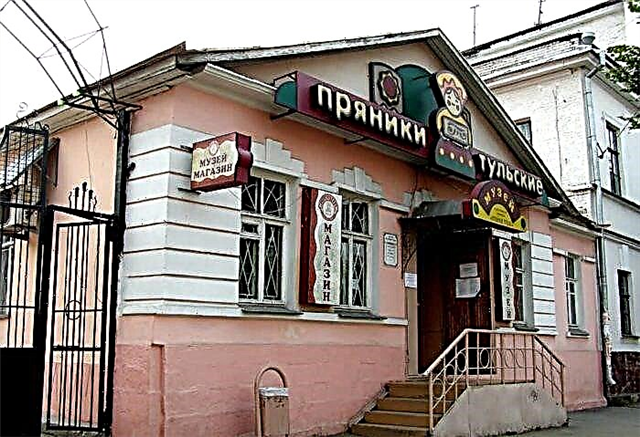
Museum "Moto-Auto-Art"
Located in the village of Kharino, near Tula. Based on a private collection. This is the most complete collection of motor vehicles produced at the Tula Machine-Building Plant. There are also extremely rare specimens, including those of foreign production. The earliest models of the exhibition were released in the 30s of the last century. The museum has its own restoration workshop, where they restore motorcycles and scooters.

P. N. Krylov Museum
Created in 2007. The museum displays more than 2,000 items from the artist's creative heritage - graphics and paintings, as well as personal belongings and archival documents. They show the creative path of Krylov in different genres of painting - portraits, landscapes, still lifes, book illustrations, work in the community of Kukryniksy. The most interesting are the paintings painted in the artist's native land - the Tula region.
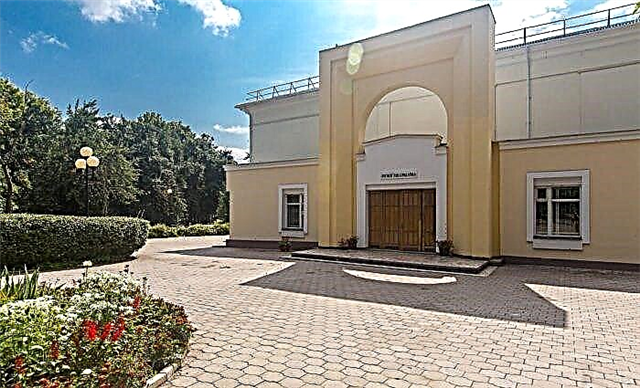
House-Museum of V.V. Veresaev
The writer's parents lived in this house. This is a wooden mansion, almost preserved in its original form. The museum exhibition is dedicated to the writer's work in the period from 1847 to 1945. The total number of exhibits is more than 3000. These are personal belongings of the writer, his photographs, drawings, a collection of books. The museum conducts excursions, during which they tell about the childhood years of Veresaev, his life. They hold creative evenings, classes for children.

Memorial Museum of N.I.Beloborodov
Beloborodov is the creator of a harmonica with a new design, which became an important milestone on the way to the invention of the accordion. The museum is located in a house built by Nikolai Ivanovich's grandfather. Rehearsals were held here first for a trio, and later for the world's first accordion orchestra, which has gained fame in many countries. On excursions, they tell about the life and work of Beloborodov, harmonica, button accordions and personal belongings are exhibited.

Places of worship - churches and monasteries of Tula
The most famous and beautiful religious buildings in the city.
Assumption Cathedral
Orthodox cathedral, built in 1898-1902 in the pseudo-Russian style. The interior painting was completed in 1909. There is an assumption that Vasnetsov's co-workers were engaged in the interior design, tk. the style of painting is similar to the work of the artist in the Kiev Vladimir Cathedral. The Assumption Cathedral looks unusual for an Orthodox structure because of the black domes topped with crosses.

All Saints Cathedral
Built on a hill and has a bell tower 82 meters high - because of this, the cathedral is perfectly visible from almost anywhere in the city. The bell tower is decorated with a graceful spire and figures of angels. The place where the cathedral is located is an old necropolis, and the cathedral previously served as a cemetery church. The architecture of the cathedral combines features of early Russian classicism and baroque. The main shrine of the temple is the Kazan Icon of the Mother of God.

Mother of God Shcheglovsky Monastery
The monastery was founded in the middle of the 16th century. It includes a central church with two side-altars, the church of St. Nikandr the Hermitage, the Assumption house church, a cell house where the pilgrim center and Sunday school are located. The main temple looks solid and majestic due to its luxurious decoration. The shrines of the temple are two ancient icons of the Most Holy Theotokos-Mammal.

There are several monasteries on the territory of the region: operating monasteries of the Tula region.
Temple of St. Seraphim of Sarov
The temple was built a little over a century ago - in 1905. An orphanage and a charitable house, supported by funds from local merchants, worked under him. From the 1930s to 2002, the premises of the temple were not used for religious purposes - the building was abandoned, and later the regional archive was placed in it. During the restoration work, the domed drum with the onion dome and the bell tower were returned to the appearance of the temple.

Church of the Annunciation of the Most Holy Theotokos
It is the oldest temple in Tula. The tent-roofed temple was originally wooden, in 1692 a stone building was erected. It is a small five-domed temple, the cornice of which is decorated with a complex brick pattern. The one-storey building has two rows of windows. A high bell tower with seven bells, built at the same time as the temple itself, adjoins one of the corners of the temple. Its oldest bell was cast in 1771.

Transfiguration temple
Built in 1842 on the site of a 17th century wooden church. The two-story church has five chapters, the style of construction is Russian classicism, the project was carried out by the architect V.F. Fedoseev, a student of K. Rossi. The facades of the building are decorated with columns, between which there are large windows. In Soviet times, the temple was partially dismantled and used as a secular building. Its restoration began to be dealt with only at the beginning of the 21st century.

The most famous monuments and memorials
Historical monuments, monuments to famous people, sculptures decorating the streets and squares of the city.
Memorial "Defenders of Fatherland Heaven"
Erected in honor of the 71st anniversary of the Great Victory and installed at the entrance to the city from the Zarechye side. Two bearing supports represent the flight path of the aircraft; a copy of the LA-5FN fighter is installed on them. Almost at the ground there is a copy of the German reconnaissance aircraft Focke-Wulf. The plot of the memorial is based on the real story of the hero of the USSR Vishnyakov, who in one of the battles shot down two reconnaissance aircraft.

Detailed article about monuments: 30 best monuments of Tula.
Monument to Tula gingerbread
Located opposite the city administration in the Central District. Installed in 2014 and immediately became a popular city attraction. The diameter of the monument is 2.5 meters, weight - 1300 kg. On one of the sides of the gingerbread, the date is indicated - 1685. It is believed that from this year the history of the sweet symbol of the city begins. A public garden is laid out at the monument, a "singing" fountain is equipped, benches are installed.

Monument "Lefty"
Opened in 2009 on the embankment of the Upa River. Before that, for 20 years, the monument stood on the territory of Tulamashzavod, where it was cast in honor of the 50th anniversary of the enterprise. The creators decided to perpetuate the memory of the craftsman from Leskov's story, as a symbol of Russian masters. The author of the project is B. Krivokhin, head of the communications department of the plant. Quotes of great writers - Tolstoy, Chekhov, Pankin - are engraved on the pedestal of the monument.

Sculpture "Tula Tea Party"
It represents the bronze figures of a man and a woman sitting at a round table and drinking tea. The Russian traditions of tea drinking are emphasized - there is a samovar on the table, gingerbreads are laid out as a treat. Tourists are often photographed on an empty chair at the table, as if taking part in a tea party. The sculpture was installed in 2014 at the initiative of the city administration. Made by sculptor Marina Logunova.

Armored train number 13 "Tula worker"
The memorial appeared on a railway platform in Tula in 2015. This is a mock-up of a real-life armored train that took part in the defense of Tula in 1941.It includes armored platforms with guns and machine guns mounted on them, an armored train and the base of the division - a headquarters car, a bakery car and a club car. In one of the armored platforms there is an exposition of the Tula branch of the railway.

"Hedgehog in a mushroom meadow"
An unusual art object appeared in Tula in 2015. The sculpture depicts a happy hedgehog near a clearing where many mushrooms grow - russula, chanterelles, there is even a fly agaric. Children especially like the composition. The height of a hedgehog is approximately equal to the height of a five-year-old child, so children often hug him and rub their nose. The installation is very positive and brings a smile to all the tourists and residents of the city passing by.

Sculpture "Lefty Shoes a Flea"
It is an unusual interpretation of the plot of Leskov's story. The urban art object, established in 2016, has fans and opponents alike. The flea in the sculpture is much larger than the master in size and is made of gears and metal parts. A frightening-looking flea dutifully gives the master its paw, and the classic Tula master boldly shoots it with a golden horseshoe.

Monument to Leo Tolstoy
Opened in 1973 in honor of the 145th anniversary of the birth of the writer, a native of the Tula province. Located on Lenin Avenue. The author of the monument, V. Buyakin, was inspired to create the image of the writer by Gogol's lines about Lev Nikolaevich, where he compares Tolstoy with wanderers. Around the monument there is a square with benches, playgrounds, a playground, fairy tale characters carved from wood.

Memorial complex "Three bayonets"
Opened in 1961 and keeps the memory of the defenders of Tula, who defended the city in 1941. Three steel bayonets installed at the sculpture "Soldier and Worker" symbolize the link between generations. The bayonets are 51, 41 and 31 meters high. In front of them is the Eternal Flame, brought from the tomb of the Unknown Soldier from the capital. Around the complex there are steles dedicated to the hero cities and military units of Tula.

Picturesque parks and squares of Tula
Beautiful places to walk in the city and relax in the fresh air.
Platonovsky park
Founded at the beginning of the 20th century. In 2016, a large-scale improvement took place in the park grove with ponds and a spring, after which the park became one of the most favorite places for recreation among city residents. Newlyweds often come to a graceful gazebo in a classic style for a photo session. There is a fountain in the center of the square near the main entrance. Sports and children's playgrounds are equipped, exercise machines are installed.

Batashevsky garden
It was founded in the 18th century by the Batashev dynasty of industrialists. Currently, it is a natural area protected by the state. This allows you to preserve the relief of the area, water bodies, forest park zone in its original form. About 40 species of trees grow in the park, wild birds and animals live - ducks, nightingales, starlings, squirrels, hares, beavers. The park has zones for sports and outdoor recreation.

Komsomolsk park of culture and rest
Located in the Zarechensky region. The main alley leads to the now defunct airport. Several dozen species of shrubs and trees grow in the well-groomed park - hawthorn, chestnut, aspen, pine, birch, linden. Beautiful flower beds have been planted. Equipped with a playground with swings and slides. There is an area with attractions, a sports complex with exercise equipment and table tennis tables, and there is a rental of sports equipment.

Kremlin square
Located near the Tula Kremlin. The park was opened in 1837, for the arrival of Emperor Alexander II. In the middle of the last century, the Tula Arms Plant was involved in maintaining the improvement of the park. However, after the collapse of the USSR, no one was involved in the park for a long time, and it fell into desolation. During the restoration work in the 2000s, the alleys were laid with paving slabs, a playground was equipped, and benches were installed.

Military-patriotic park "Patriot - Tula"
A large-scale project aimed at the patriotic education of youth, support for veterans, as well as family recreation. The park was opened in 2019. It is located near the Tula Suvorov Military School. In the park, military-defense equipment of the war years, models of the Tula defense plant, and retro cars are exhibited. There is a cluster of military sports games, playgrounds, and a cafe for visitors.

Architectural landmarks of Tula
Lomovskie gates
An architectural monument of the 18th century. The gate stood at the mansion that belonged to the merchant Lomov, so this name was assigned to the sight. Previously, the mansion belonged to the head of the city Liventsev. Baroque lines are clearly visible in the architecture of the gate, some even attributed the authorship of their project to the famous architect Rastrelli. A unique monument of Tula architecture is often printed on postcards and calendars.

House of the Nobility Assembly
Located in the historic center of the city. The three-storey building is interesting for its architecture. Its facade seems to consist of three parts. The main staircase and the Column Hall in the style of the Italian Renaissance are noteworthy in the interior design. Since the 19th century, the building has been a place of public urban life. Here were held noble and zemstvo meetings, a public library was located, concerts and creative evenings were held.

Moscow station
Back in the 19th century, at the then wooden station building, there was a meeting between Tolstoy and Turgenev. A commemorative plaque telling about this event is located on the wall of the modern station building. The station was rebuilt twice and now its building is a monument of culture and history. The two-storey building has a beautiful facade, a six-column portico, decorated with bas-reliefs and stucco details.

Attractions near Tula
Places associated with the name of Leo Tolstoy are popular and visited tourist attractions.
Museum and station complex "Kozlova Zaseka"
The railway station, which has retained its historical appearance since 1864. Writer L.N. Tolstoy. There was also a post office that delivered correspondence to him. At present, the complex, in addition to the station platform and the station, includes the Leo Tolstoy Railway exhibition and a souvenir shop. Excursions are organized around the complex.

"Museum-Estate of L. Tolstoy" Yasnaya Polyana "
The family estate of Leo Tolstoy, where he was born, spent most of his life and is buried. Tens of thousands of guests from all over the world visit the interactive museum-reserve every year. The architectural and landscape appearance of the Russian estate has been preserved since 1910. Authentic interior items preserve the atmosphere of creativity and life of the great writer. The estate includes outbuildings, a bathhouse, a mill, ponds, alleys, gardens and parks.



